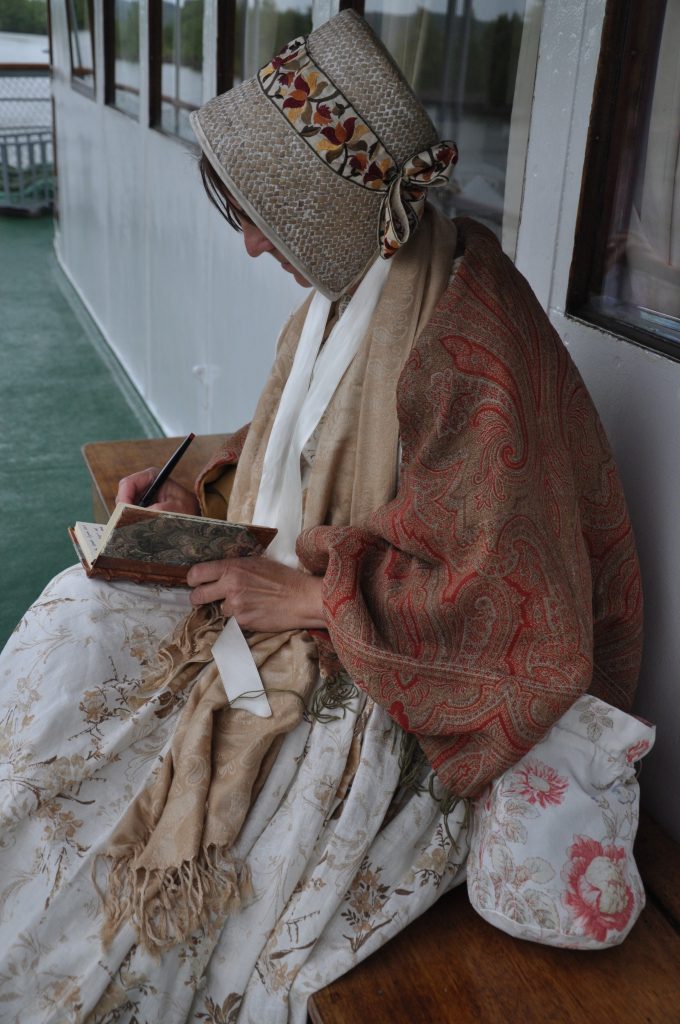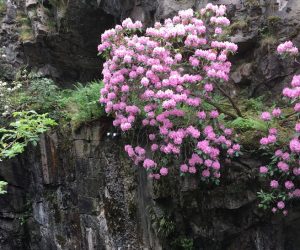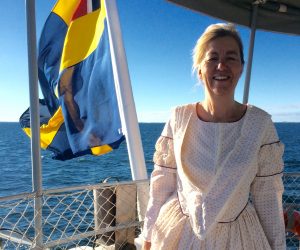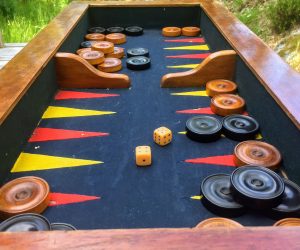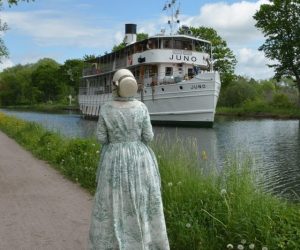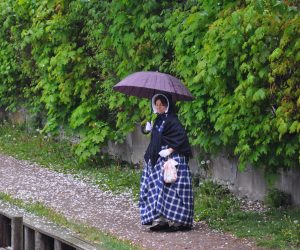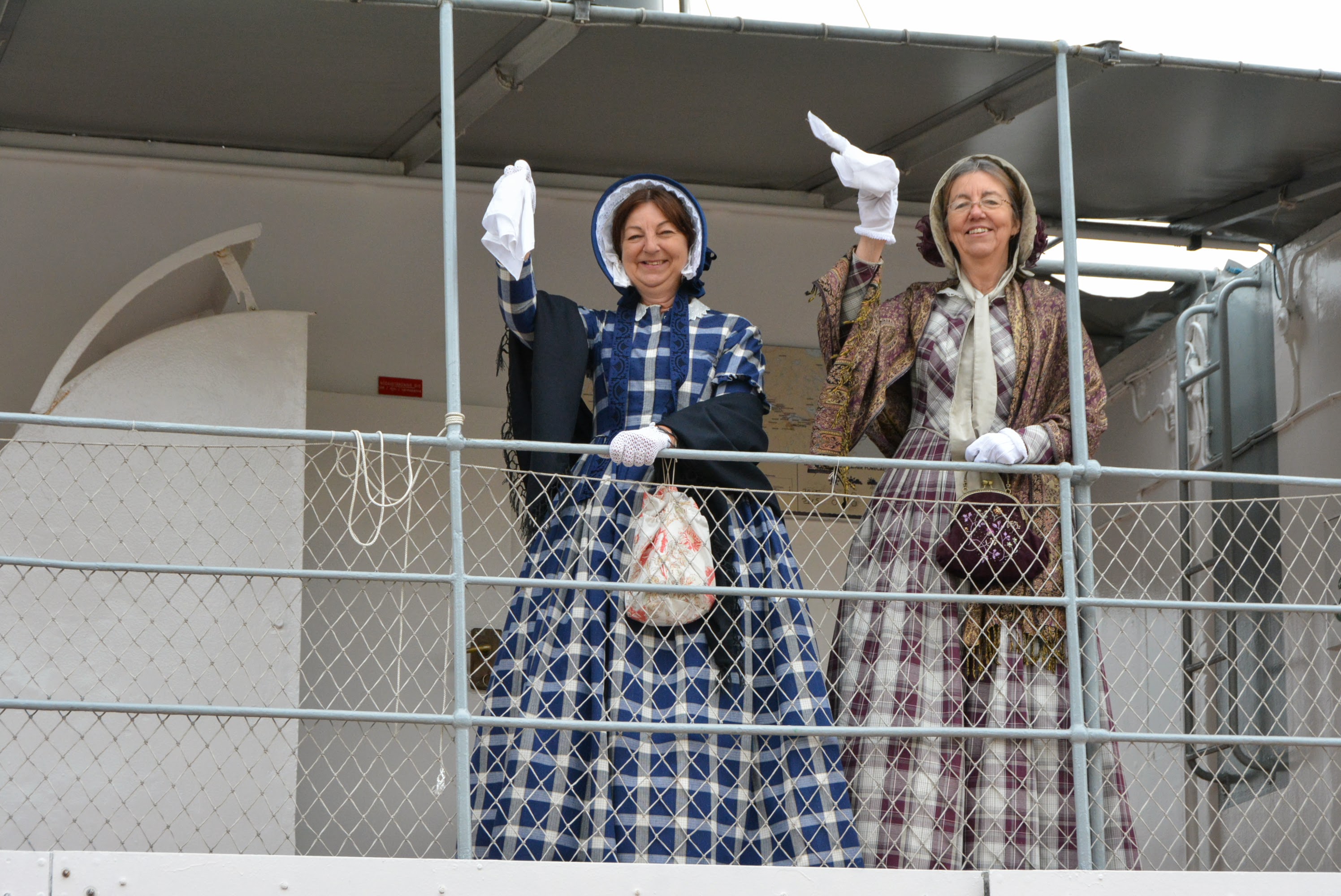Göta Canal: Day 4 – Lake Vänern, Trollhättan, and Gothenburg
Månad: juni 2017
Saras reseberättelse: Göta Canal Day 3 – Motala till SJötorp
100 år före IKEA
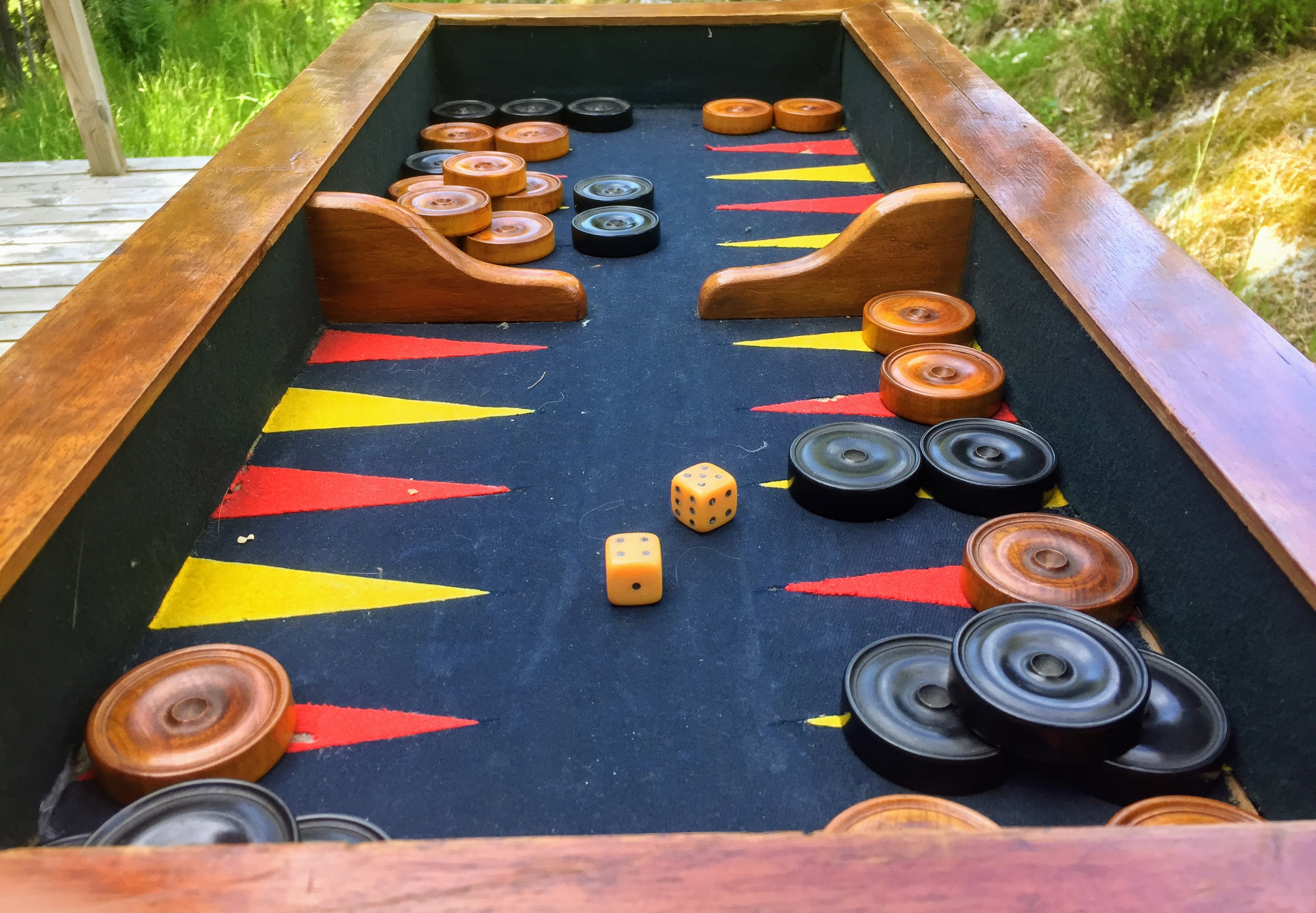
För en månad sedan läste jag bouppteckningen efter Augustas pappa, Johan Petter Söderholm. Här fanns detaljerade beskrivningar av alla rum och hur de var möblerade. I detalj kunde jag till exempel läsa vad som fanns i Stora förmaket 1835.
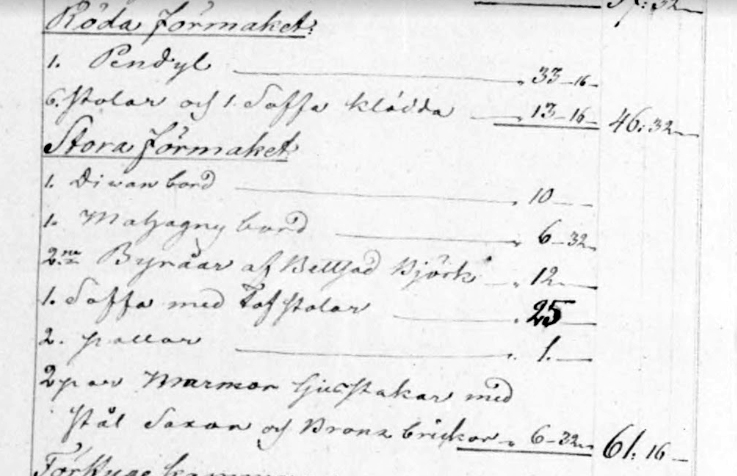
Vad gjorde Augustas mamma med alla möblerna när de lämnade Ekeby och flyttade in hos fabrikör Leijdenfrost? På Loddby, dit de flyttade, fanns ju redan ett möblerat hem. Kanske tog de med sig några möbler, så mycket som fick plats på en vagn. Resten såldes förmodligen på auktion, dåtidens sätt att köpa möbler och husgeråd om man inte kunde tillverka dem själv eller beställa nytt från hantverkare. På auktionerna samlades alla, oavsett samhällsklass, när det gällde att köpa något man behövde. Och med industrialismens intåg i början av 1800-talet fick nya samhällsklasser råd att börja konsumera.
Det fanns ju inget IKEA att köra iväg till med häst o vagn för att köpa ett matbord, en visp eller en matta (eller ett nytt kök;)
Ärvda möbler
Självklart ärvde de flesta sitt bohag från föräldrarna. Och så har även Sara och jag gjort, i alla fall en del möbler. En tacksamhetens tanke går till vår pappa Pontus som på ärvda möblers baksida fäste lappar med möblernas historia.
Sara har ett spelbord som tillhörde Augustas man Adolf Nordwall när han studerade i Uppsala. Jag kan se honom framför mig, hur han spelar brädspel och dricker punsch med sina studiekamrater. När kvällen blir sen tar han fram papper, penna och bläckhorn och skriver till Augusta som sitter och väntar vid sitt fönster på Hantverkargatan. Spelbordet sålde han på auktion när han flyttade från Uppsala till sin nya bostad i Strängnäs på 1850-talet. Där flyttade sedan Augusta in när de var nygifta. Vår farfar lyckades 50 år senare köpa tillbaka spelbordet som då hamnat i Visby.

Möbler som hörde till gården
När vi besökte Loddby för ett par veckor sedan fick vi även titta in i flygeln där tiden stått stilla i decennier, ja kanske till och med 150 år. Förmodligen var det originalfärgen som syntes på stockväggarna. Där stod även gamla möbler som enligt vår trevliga värdinna Sanna, ”hör till gården”. Undrar just om de följt med gården från Leijdenfrosts tid?
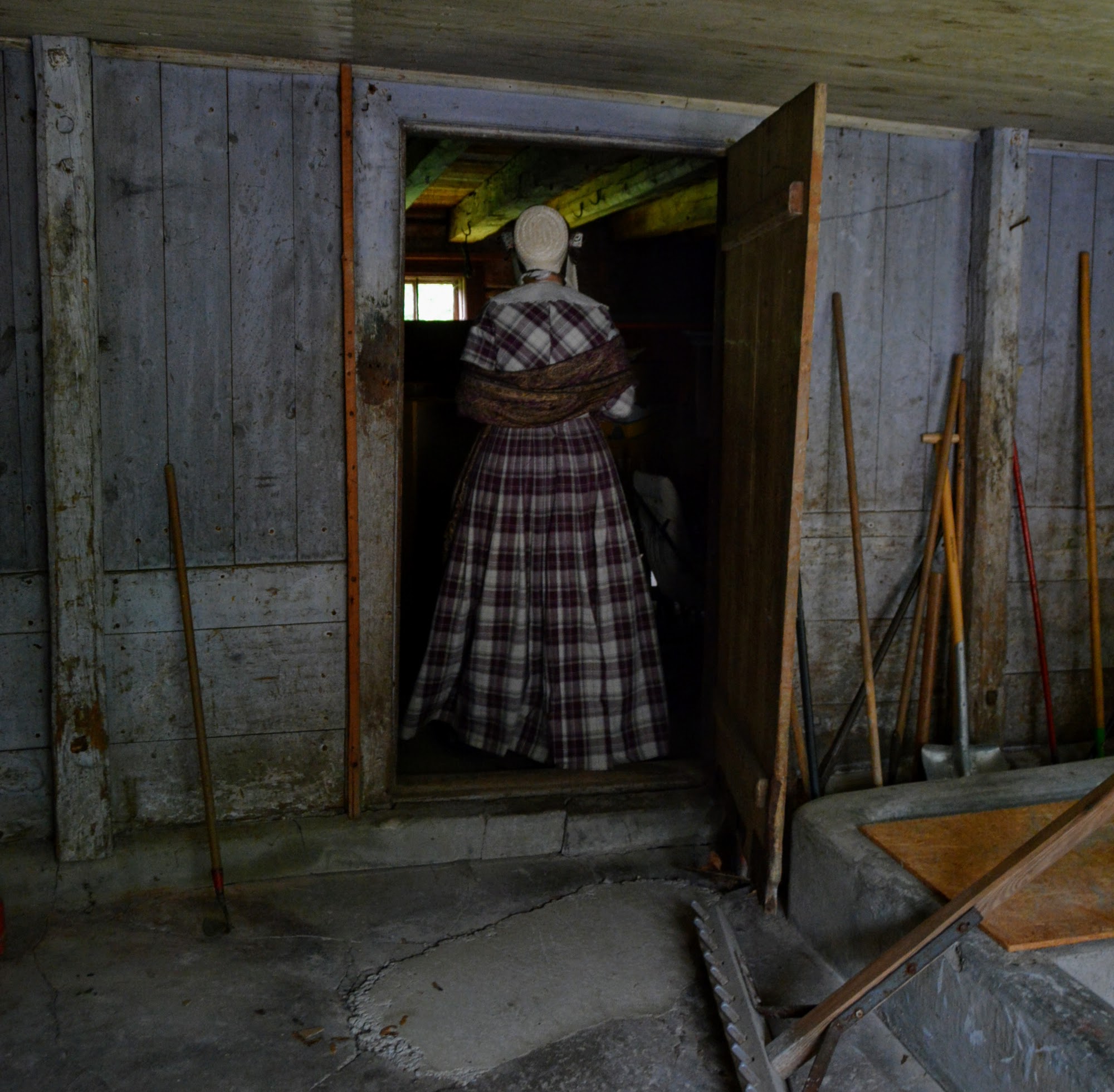
Dagens självklarheter, morgondagens historia
Idag på väg till min nya arbetsplats på IKEA, undrar jag hur historien om 2000-talets möbler kommer se ut. Jag ska åtminstone sätta lappar på våra möbler när jag kommer hem. De ärvda har ju redan lappar, men de ”vanliga” IKEA-möblerna kommer säkert att betraktas som tidstypiska för 2010-talet om 150 år.
PS.
Det finns en auktionsfirma på nätet som heter Augusta Auctions. Den har ingenting med vår Augusta att göra, men där har jag hämtat mycket inspiration till våra 1850-talskläder. Det är Nordamerikas största auktionsfirma för historiska kläder! DS.
Saras resedagbok på Göta Kanal: Dag 2, Söderköping till Motala
Resa i 1850-talskläder
Hur gick det då att resa och leva i våra Augustakläder?
Första riktiga testen blev faktiskt på Göta kanalresan. I fyra dagar i sträck var vi enbart klädda i 1850-talskläder. När vi kom hem fortsatte vi av bara farten med evenemang i Stockholm och Linköping, iklädda våra Augustakläder.
Det gick mycket bättre än förväntat! Jag snubblade inte på kjolarna en enda gång och trasslade inte in mig, inte ens i den kjol som innehåller 5 kvadratmeter tyg. Mest förvånad är jag över hur snabbt jag vande mig vid dessa kläder och hur mycket lättare det var att iklä sig rollen som 1850-tals dam om man är klädd som en sådan. Man blir faktiskt en annan person och rör sig på ett annat sätt. Snörlivet hade jag på mig alla dagar utan problem. Det var som att ha slalompjäxor; trångt när man sätter på sig, sedan tänker man inte på dem förrän man tar av sig och allt blev väldigt lätt igen.
Ja, lite problem var det ju när jag fick blåsa i en poliskontroll på hemvägen från Linköping och inte kunde ta tillräckligt djupa andetag.
Regn
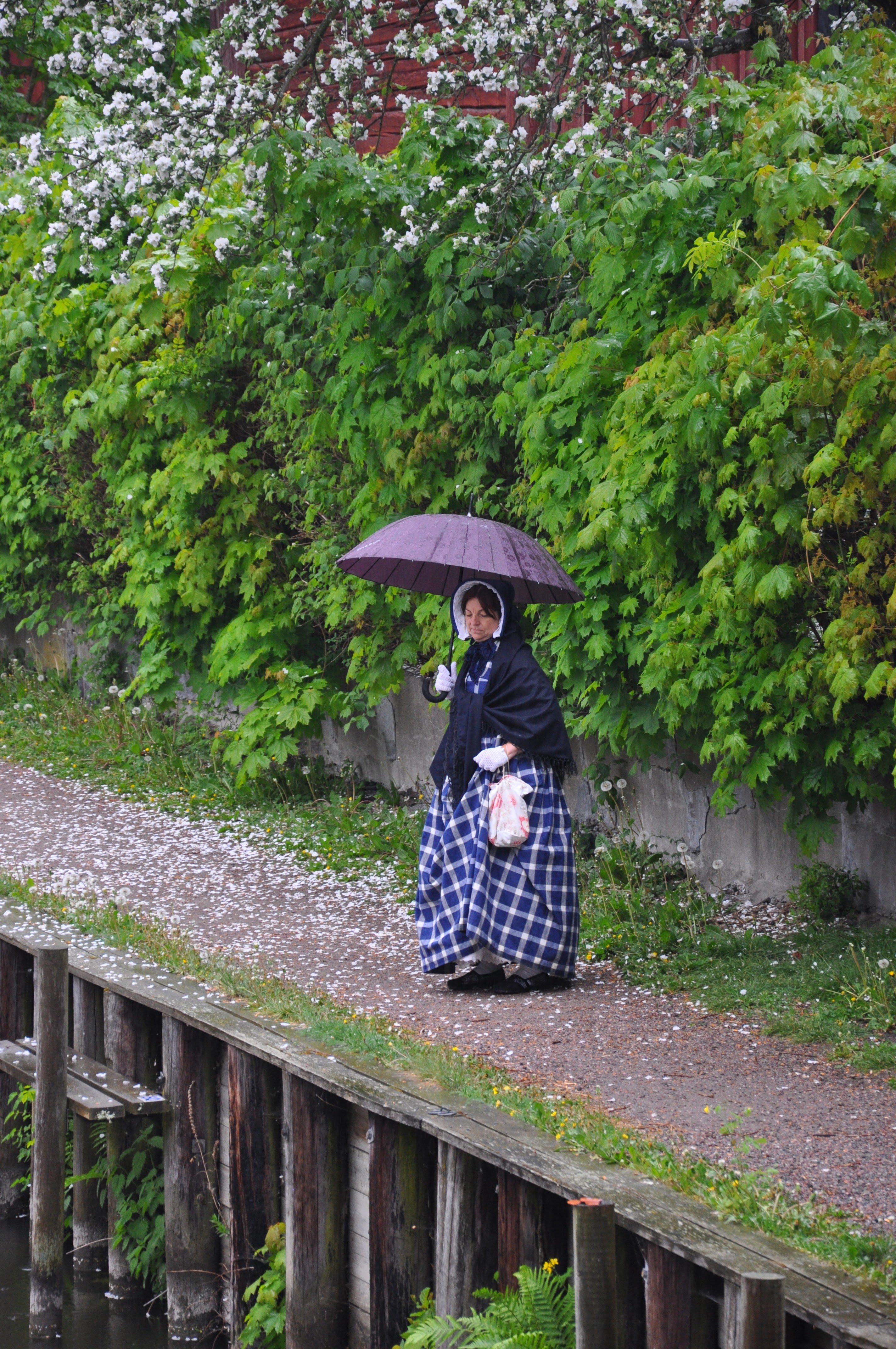 Regn var det största problemet. Man kan hålla sig torr upptill med paraply, men kjolen blir blöt och tung i nederkanten. Det innebär också att den blir längre! Och då är det lätt att snubbla på fållen!
Regn var det största problemet. Man kan hålla sig torr upptill med paraply, men kjolen blir blöt och tung i nederkanten. Det innebär också att den blir längre! Och då är det lätt att snubbla på fållen!Underkjolarna klarade sig bra, lite solkiga i kanten bara. För att inte tala om de vita strumporna som inte blev rena ens efter en vittvätt! Men underkjolarna tappade lite av sin stärkning efter ett par dagar och även då blir kjolen längre!
Nu hade vi ju tur att det inte var så varmt. Det fick vi däremot känna av på vårt besök i Gamla Linköping helgen efter. Så solfjädern kommer att behövas i sommar.
Bonetter och hättor
Våra bonetter behöver få en bättre fastsättning på håret. De guppar fram och tillbaka och sitter sällan på riktigt snyggt, speciellt inte om man är ute och går. Då åker de bak, men jag blev riktigt bra på att knycka till på nacken så att den hamnade rätt igen. Vad vi inte hunnit göra var de hättor som gifta kvinnor har på sig inomhus. Jag sydde en enklare variant som blev mer som en nattmössa och med den under bonetten satt alltihop på plats. Men det största problemet är att man hör lite dåligt med hatten på!
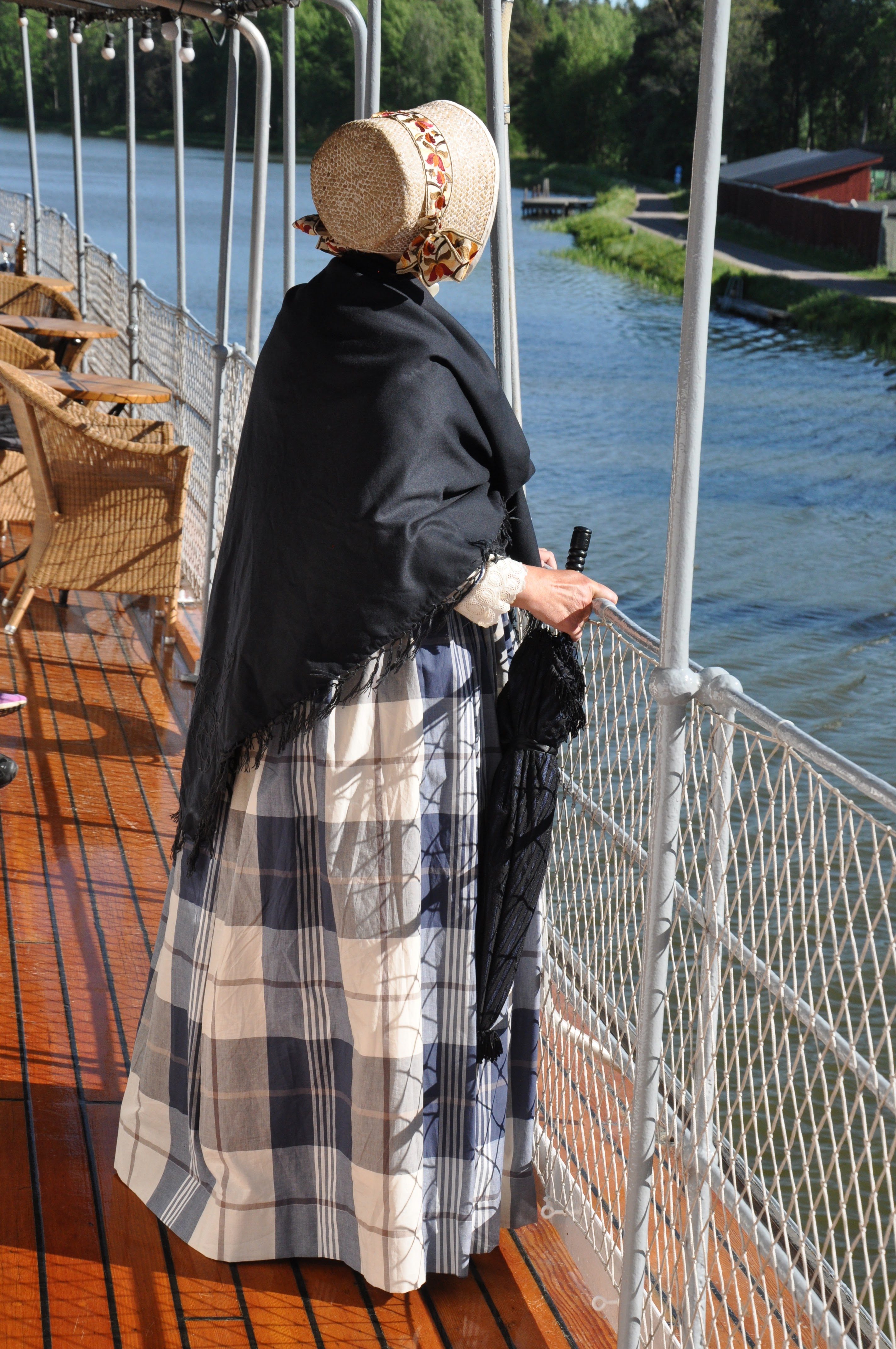 Handskar
Handskar
Snyggt ser det ut, men jag är van att använda händerna hela tiden och då måste man ta av sig handskarna. Men det är ju en av upptäckterna. En 1800-talsdam höll sig betydligt lugnare. Något att lära sig!
Sjalar
Sjalarna var toppen! Vem behöver en jacka när man kan svepa in sig i en stor yllesjal. På däck på både Vänern och Vättern fungerade de bra i blåsten. De tunnare sjalarna var också bra och fungerar även när man dansar 1800-talsdanser! Vi provade förra helgen i Gamla Linköping och det var så KUL! Där kan man säga att det kändes som man förflyttade sig tillbaka i tiden när kjolarna svängde till musiken.
Handväskor
Så var det det där med handväskor och att behöva bära på saker. Här finns mycket att fundera över till Tysklandsresan! Hur stor/liten den ska vara och vad är viktigt att kunna ha i den. Eftersom vi fotograferar mycket och gärna med systemkameror (något man definitivt inte gjorde 1847, annat än i en ateljé) behöver vi ha väskor som rymmer kameror och objektiv. Men en kappsäck är bra för stora saker och en lagom stor retikyl för något mindre saker. Men det är mycket att hålla i, med väskor, parasoller, handskar och med en hand som håller i hatten!
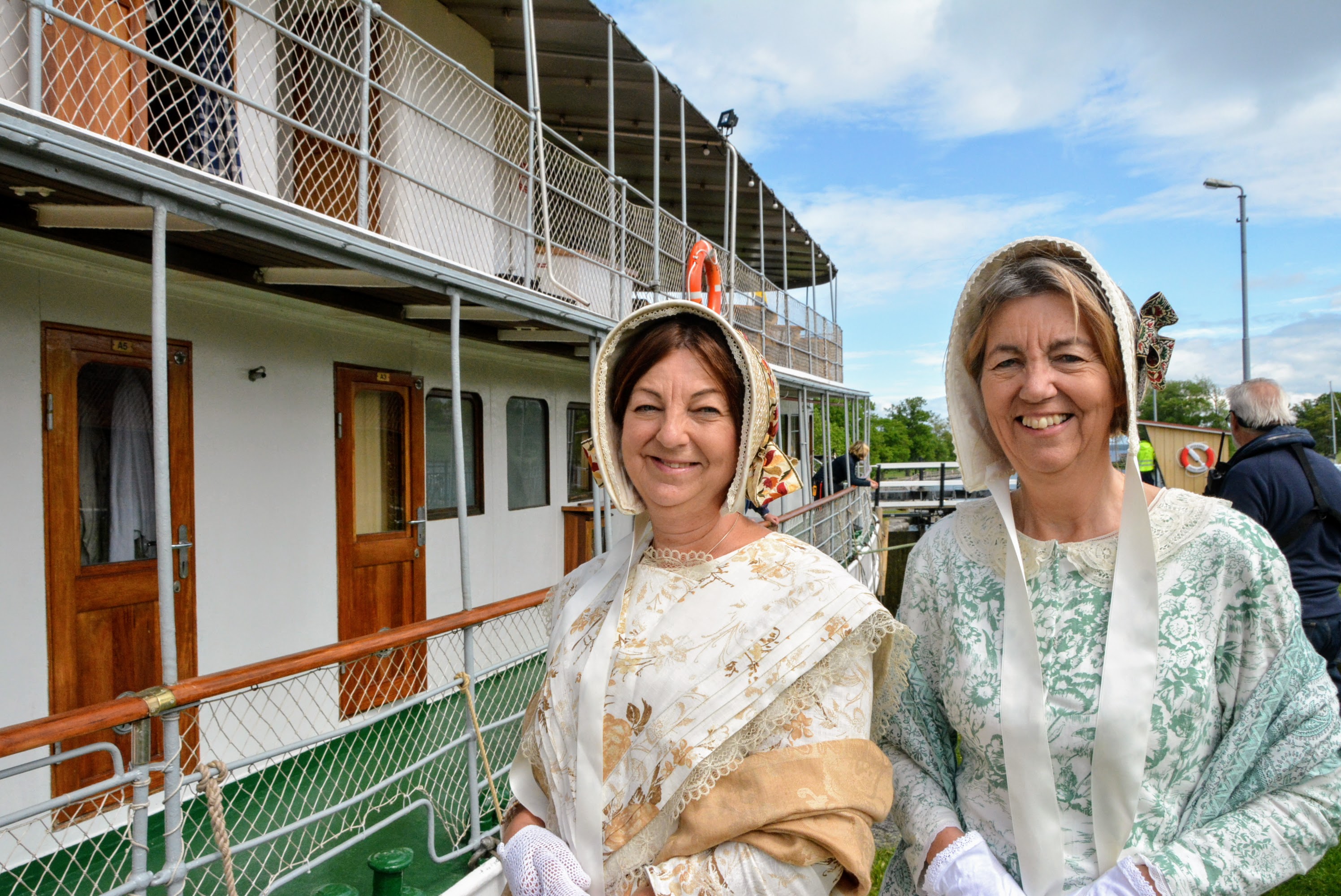 Sammantaget kan jag säga att efter fyra dagar tyckte man inte själv att det kändes konstigt eller utklätt. Men när vi klev av i Göteborg blev vi påminda igen, speciellt som det var Summer Burst festival och vår klädsel inte riktigt liknade den som kidsen vinglade runt i.
Sammantaget kan jag säga att efter fyra dagar tyckte man inte själv att det kändes konstigt eller utklätt. Men när vi klev av i Göteborg blev vi påminda igen, speciellt som det var Summer Burst festival och vår klädsel inte riktigt liknade den som kidsen vinglade runt i.Planer för hösten
Nu börjar vi etapp 2, förberedelser för Tysklandsresan i höst. Då ska kläderna vara anpassade för höstväder, vandring i bergen och stadspromenader samt ett operabesök i sidenklänning. Och dessutom ska kläderna kunna hålla sig fräscha i ett par veckor. Det blir en utmaning! Jag ser redan för mig hur vi sitter på någon tvättomat i bara underkjolarna och väntar på att kläderna ska torka! Det kan nog bli rubriker av sånt med!